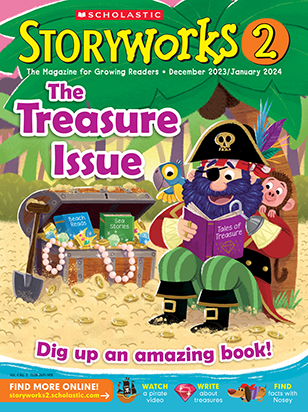Luc Pouliot/Alamy Stock Photo(Groundhog); Shutterstock.com (Flower)
The story you just read is fiction, but groundhogs are real! Wild groundhogs live in underground homes called burrows. In the winter, groundhogs go into a deep sleep in their burrows. This is called hibernation. In the spring, they wake up. They leave their burrows.

